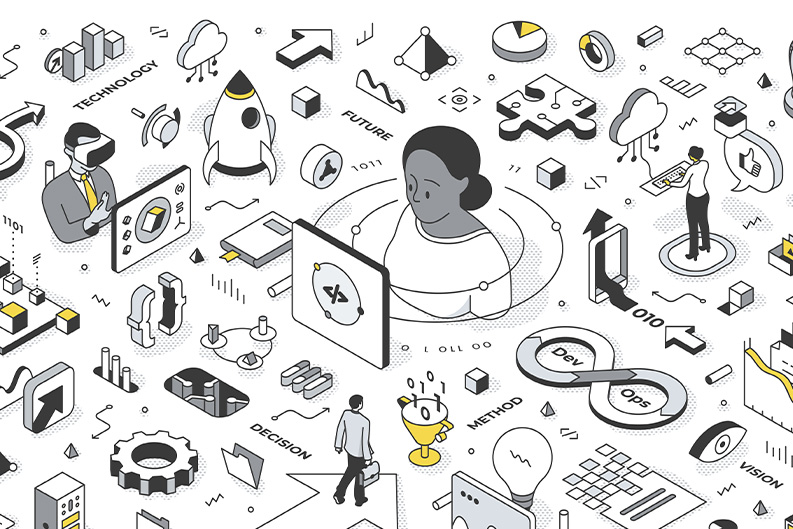Dr Paul Hedayati
Transforming Sustainability of Companies: Three Systemic Approaches

The move towards a low-carbon economy and the shift to a circular economy are two noteworthy examples of transformative changes taking place in the sustainability landscape.
In response to these foundational shifts, corporations have gradually acknowledged the necessity of revamping their sustainability systems and structures. However, what strategies prove effective in implementing such systemic shifts?
In this article, I will offer a brief overview of three systemic approaches aimed at facilitating corporate sustainability transformation. Before we proceed to explore these approaches, it’s essential to establish a clear understanding of what constitutes systems. A system is an arrangement of interconnected components that collaborate harmoniously as a unified entity, functioning cohesively to achieve a specific purpose or goal. Systems are prevalent. Our body, for instance, is a multifaceted system composed of numerous subsystems, such as the digestive system and cognitive system, among others. Similarly, each company operates as a distinct system.
Using the above definition for systems as a foundation, we can identify the three fundamental elements inherent in every system: the goal, connections, and parts.
I will outline these components below and elaborate on how altering them can initiate systemic shifts in the state of sustainability within companies.
Approach 1: Changing the Goals
Among the three crucial components of systems, the goal of a system is the least visible element. Understanding the goals of systems often requires careful observation, sometimes over an extended period. The same holds true for corporations. An approach that can aid in uncovering a company’s overarching goal is to reflect on the Key Performance Indicators (KPIs) set for its various subsystems (departments), such as procurement, human resources, sustainability, and production. If these departments all prioritise similar objectives—revenue generation and cost reduction—the company’s actual goal likely revolves around wealth accumulation.
While it’s the least apparent component of systems, altering the goal of a system is the most effective approach for influencing its behaviours. Consequently, to transform the state of sustainability within a company, the most effective strategy is to assess and, if needed, modify the company’s overarching goal or adjust the goals of its subsystems. If modification is deemed necessary, it can occur through two distinct forms: revolutionary and evolutionary.
In a revolutionary reform, companies make fundamental changes in the values they create. Let’s consider the following illustration: Imagine an agribusiness cultivating water-intensive fruits like watermelon and blueberry in an arid region. A sustainable transformation for the company entails shifting from a conventional “crop farming entity” to an innovative “carbon farming entity.” This transition involves repurposing the land to cultivate low-water-demand native trees that function as carbon sinks. In the carbon farming scenario, the company would generate values that are entirely distinct from the values generated in the crop farming scenario.
In an evolutionary reform, companies couple their economic KPIs with relevant social and environmental metrics. For instance, their human resource departments set and pursue inclusion and diversity targets, while their procurement departments commit to combat modern slavery and achieve net-zero emissions by 2030.
Approach 2: Changing the Connections
In this article, the term “connections” pertains to the tangible and intangible links among the various components of a system. Within corporations, these connections encompass policies and protocols governing the company, the sense of loyalty exhibited by employees towards their employer, the trust held by consumers and clients in the corporation, among others.
Altering the connections within a company represents a systemic approach to bolstering the company’s sustainability performance. For instance, companies can significantly enhance their sustainability by furnishing suppliers with a comprehensive document commonly referred to as the ‘Supplier Code of Conduct and Behaviours.’ This document outlines the sustainability expectations that a company holds for its suppliers. For instance, the company can request their suppliers to give preference to the use of recycled materials over virgin materials when manufacturing the products that they supply to the company.
Approach 3: Changing the Parts
In the context of systems, the “parts” represent the fundamental building blocks or components that constitute the system itself. Every corporation comprises numerous parts, which can be categorised into departments, teams, or even individual employees. These parts function as interconnected elements contributing to the company’s overall performance.
Changing the parts within a company represents a systemic approach to enhance its sustainability. However, it’s typically effective when accompanied by a change in the company’s goals or its relationships. To illustrate this concept, consider Company A, which initially struggles with sustainability. Here are two examples illustrating why the company’s strategy of improving sustainability by altering its parts may fail.
Example 1: The company replaces its petrol-powered fleet with more fuel-efficient hybrid cars. Initially, this leads to reduced fuel consumption and carbon emissions. However, over time, the fuel-efficient cars encourage employees to drive longer distances, offsetting the initial fuel savings.
Example 2: The company appoints a new sustainability manager who develops several sustainability initiatives and presents them to the Board of Directors. Unfortunately, the Board does not approve these initiatives, resulting in the company’s sustainability status remaining unchanged.
In Example 1, Company A could have enhanced its sustainability value by altering a part of its system—the fleet—if the company had also adjusted certain connections. For instance, by offering sustainability-oriented training to its drivers or by implementing policy documents concerning the use of the company’s vehicles.
In Example 2, Company A didn’t realise any sustainability improvements despite altering a crucial part/component of the system—the company’s sustainability manager. This change could have been effective if the members of the company’s Board of Directors, who oversee the company’s direction, had regarded social and environmental progress as equally important as its economic performance.
While altering the parts within companies, whether they involve people or machinery, is generally considered the least effective approach to improving their sustainability, surprisingly, many companies still opt for this approach. This is because they often view it as a simpler and more immediate solution compared to the other two systemic approaches.
Summary:
In this article, we’ve explored three systemic approaches to corporate sustainability transformation: changing goals, changing connections, and changing parts. We’ve learned that while altering parts (such as machinery or personnel) is the least effective approach on its own, it can still be appealing to some companies due to its perceived simplicity. However, the most impactful changes often come from adjusting a company’s overarching goals or reconfiguring its connections with stakeholders.
Conclusion:
Corporate sustainability is evolving, driven by the imperative to address global challenges like climate change and resource scarcity. These systemic approaches offer a roadmap for companies that seek to make meaningful changes. By considering their goals, connections, and parts, businesses can navigate the complexities of sustainability transformation and contribute to a more sustainable future.
In crafting this article, I drew inspiration from the book ‘Thinking in Systems: A Primer,’ authored by the late Donella H. Meadows. I highly recommend this book as it offers valuable insights into the concepts explored here.

Dr Paul Hedayati
Principal Sustainability Consultant
Dr Paul Hedayati has dedicated more than two decades of his career to consulting, researching, training, and coaching in the sustainability space. As an Environmental, Social, and Governance (ESG) specialist, he has worked in different business setting including government, engineering consulting, tertiary education, and not-for-profit.
Paul has supported a long list of public and private organisations to be:
- more resource efficient,
- more climate resilient,
- more ready for a circular economy, and
- more committed to the principles of ethical procurement.
Partner with us on your next project
Contact our specialised team for more information about our services.